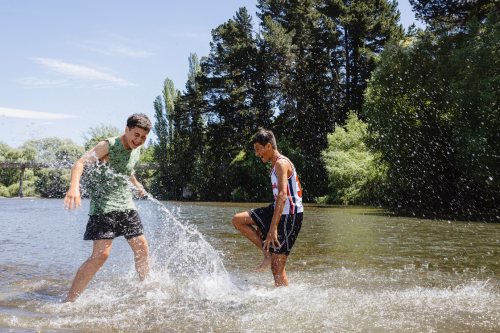I want to...
Current filter: Most popular
A to Z
Apply for a job
Biosecurity
Consents
Consultation
Contact Us
Environmental Data
Farmers Hub
Fix it or Report it
Information Request
Join an Event
Leasehold Land
Meetings
Rates
Water Metering
Have Your Say
Weather volatility highlights need to build Hawke’s Bay’s water security
Published: 28 June 2023

As Hawke’s Bay works to recover from Cyclone Gabrielle and our wettest recorded year, a report released today finds that, as we plan for how we manage too much water, we need to also consider how we build resilience to not having enough.
Funded by both Hawke’s Bay Regional Council and Kānoa – Regional Economic Development and Investment Unit, the Regional Water Assessment (RWA) defines the growing gap between water demand and supply in Hawke’s Bay and provides options for sustainably managing water.
Regional Council Chair, Hinewai Ormsby, says the report looks at how much water the region currently has, how it’s used, and what that will look like in future.
“This report comes as increasingly volatile and extreme weather is directly impacting the lives of our whānau. Most recently, we’ve seen the impact of a cyclone, but it’s not long ago that we faced two years of severe drought. Those weather events are expected to become more frequent and more severe,” says Chair Ormsby.
“The predicted impacts of climate change on freshwater quantities will have a huge effect on our environment and our communities. We’ve seen what drought and floods do to our rivers, streams and wetlands. And, what that then means for our people, growers and farmers.
“We need to find a way to make our region more resilient and that will require some big decisions about how we manage this precious taonga. The RWA provides the baseline data and options to inform those decisions.”
Regional Council Asset Management Group Manager, Chris Dolley, says the RWA is the first report of its kind completed in New Zealand, providing a regional stocktake of our freshwater system and analysis of future supply and demand trends.
“On the face of it, it looks as though we have plenty of water, with more than 16 billion cubic metres (m3) of rain falling on our region in the 2019/20 year studied, and the region only using 138 million cubic metres of that. The problem is that we don’t have enough water in the drier months when it’s needed most. And in future, we’ll need to leave even more water in the environment to protect our waterways and the biodiversity that relies on them, on top of what we’re already using now.”
Using current demand, climate change projections, and economic forecasts, the report forecast scenarios of what Hawke’s Bay’s water security could look like over the next 20 to 40 years.
Despite the Regional Council capping water takes, the report forecasts a widening gap between supply and demand – which represents both current consent holders needing to access more of their allocation and the increasing lost opportunities for our economy.
“It’s pretty confronting. The report tells us that even if we implement significant water savings, we will need nearly 25 million cubic metres more water by 2040, increasing to 33 million cubic metres by 2060.
“That scenario relies on our region finding some big water use efficiencies across agriculture and horticulture, councils and households, and processing and manufacturing. Even if everyone in our community pitches in to save water, it’s likely we’ll still need to find an additional 20 percent on what we use now,” Mr Dolley says.
The report provides practical options for sustainably managing freshwater, through both reducing demand (efficiency, conservation and reuse) and, if viable and supported by the community, supplementing supply to our environment (above and below ground water storage and wetland restoration). If supply options are ruled out, then an even bigger collective, community effort will be needed to reduce our demand.
Chair Ormsby says the National Policy Statement for Freshwater Management 2020 (NPSFM) requires all regional councils to notify freshwater management plans. It’s through this planning that the community will be able to have its say on future freshwater planning.
“We’ll need to use a suite of tools to ensure continued access to freshwater and the RWA outlines what tools we have in our toolkit to manage freshwater.
Our community needs an open, honest conversation on which of those tools we choose to ensure Hawke's Bay has long-term, climate-resilient, and secure supplies of freshwater, for all.”
To see the summary and report go to www.hbrc.govt.nz/hawkes-bay/projects/regional-water-security-programme
Disclaimers and Copyright
While every endeavour has been taken by the Hawke's Bay Regional Council to ensure that the information on this website is
accurate and up to date, Hawke's Bay Regional Council shall not be liable for any loss suffered through the use, directly or indirectly, of information on this website. Information contained has been assembled in good faith.
Some of the information available in this site is from the New Zealand Public domain and supplied by relevant
government agencies. Hawke's Bay Regional Council cannot accept any liability for its accuracy or content.
Portions of the information and material on this site, including data, pages, documents, online
graphics and images are protected by copyright, unless specifically notified to the contrary. Externally sourced
information or material is copyright to the respective provider.
© Hawke's Bay Regional Council - www.hbrc.govt.nz / +64 6 835 9200 / info@hbrc.govt.nz


